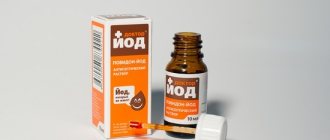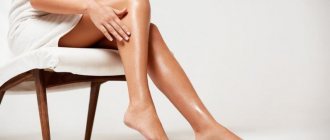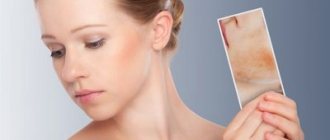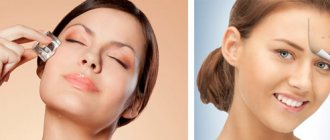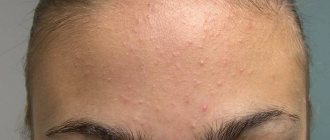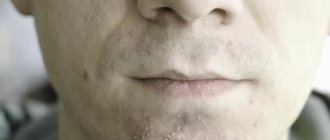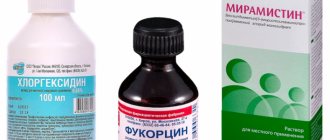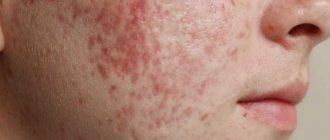How to remove?
The best way to eliminate irritations is to prevent their occurrence through careful preparation, checking the composition for allergies and expiration dates.
You should stock up on clean strips (for waxing) and new spatulas for applying and distributing the composition. You need to put cotton pads and soothing lotion near you. Don't forget the disinfectant lotion. Pharmacy anti-burn ointments and creams will help reduce the resulting redness: due to their light texture, they are quickly absorbed into the epidermis and perfectly reduce irritation. Unfortunately, it is not always possible to remove redness instantly. Sometimes it is better to apply one cream after hair removal than to wipe your poor skin with your grandmother's tincture every three minutes. By the way, constant rubbing with cotton pads can also cause increased irritation. You wipe your skin once and that’s enough; next time, use tonic no earlier than a couple of hours later. It’s even better to use a spray - for example, thermal water. You definitely can’t go overboard with it.
Sometimes the skin's reaction is unpredictable: after hair removal by any method, ingrown hairs or pustules often appear. All this slowly leads to the formation of age spots. Ingrown hairs interfere with the normal functioning of the skin and appear on its surface as huge inflamed pimples, which must be promptly and carefully removed.
Almost 9 out of 10 cases of their removal are caused by age spots. They can and should be fought. A scrub will help prevent their formation. Cleanse your skin with it about a day before waxing and do not forget to use the product at least 2 times a week in order to remove dead skin cells in time and set the direction of growing hairs.
It will take a long time to treat pigment spots: to do this, you will need to wipe the epidermis with lightening compounds (special lotions without alcohol or regular lemon juice, you can use a cream against pigment formations and combine the above methods). Creams and gels against ingrown hairs will help prevent the formation of inflammation and pigmentation - after the hair removal procedure, they are always used by both professionals in salons and home craftsmen. Pharmacy ointments, like Badyagi, will help cure inflammation.
How to get rid of irritation after shaving, watch the following video
Prevention
- Under no circumstances should you scratch or rub the area of skin that has been depilated. This is fraught with damage to the epidermis and infection in the skin;
- the remnants of the depilatory product must be washed off only with cold water, which, unlike hot water, will narrow the pores and prevent infections from penetrating into the skin, and will also protect the depilation site from irritation;
- The shaved area of the body should not be rubbed with a towel, it is better to gently blot it;
- After depilation, you should take a shower using antibacterial soap. After drying the skin, apply a cotton pad with Hydrocortisone to the treated surface or use Chlorhexidine;
- Avoid products containing talc. It may cause skin irritation;
- Often, irritation after depilatory cream occurs after using low-quality products that have expired or are stored for a long time in unacceptable conditions;
- use special moisturizing creams that should be applied to the skin after the procedure. Despite the fact that some consider the purchase of these products to be a waste of money, such compositions protect the skin quite well from irritation;
- If you are not sure about the choice of skin cream, contact a hair removal salon. The products that are recommended by the masters in these salons can most often be purchased in them.
Causes of irritation
Hair removal is a procedure that the life of a modern lady cannot do without, but even it requires sacrifice. Microdamages after the procedure result in red spots on the body, itching and an unpleasant appearance of the skin surface. During the procedure, the “body” of the hair and its root are subjected to mechanical damage. The latter, by the way, exceeds the thickness of a hair in size and injures cells from the inside. This is the reason for the formation of irritations.
Red dots appear from hair removal - wax, sugar, laser, photoepilation and a regular epilator. These are all potential irritants for our skin. So, the main reasons for this unpleasant phenomenon are as follows:
Properly selected instruments, sterility and careful preparation of the skin play an important role in preventing the appearance of red spots, irritation, and ingrown hairs after the procedure.
Preparation for hair removal consists of the following steps:
- A few days before the procedure, gently scrub the skin in the treated areas and use moisturizers.
- Shortly before epilation, you need to thoroughly steam the skin. Hair will be easier to pull out without causing skin irritation.
- When using an electric epilator, it is recommended to treat the hair surface with talcum powder, which will make the process more effective.
- For the procedure with wax and sugar paste, the treatment area must be thoroughly dried and degreased.
Waxing is a procedure in which hairs are removed from the roots. There are microtraumas on the skin after manipulation. If you do not properly monitor the dermis afterward and violate the rules of the rehabilitation period, various undesirable manifestations may occur. Sometimes irritation occurs after waxing. It is accompanied by itching, redness, swelling of the tissues and severe discomfort.
The reason for this phenomenon may be:
- Lack of hygiene by the woman herself. The skin should always be clean both before and after hair removal. Before the procedure, it is advisable to wash the epidermis with soap and steam. This will not only eliminate all germs and contaminants, but will also make the procedure painless.
- Lack of sanitary and hygienic standards in the cosmetologist's office. The master is obliged to ensure the cleanliness and disinfection of all tools used. A disposable diaper should be placed on the couch.
- No scrubbing before the procedure. It is necessary to remove the stratum corneum of the dermis to avoid problems during and after hair removal.
- Poor antiseptic treatment before and after waxing. The specialist must carefully treat the entire area that he plans to epilate. After the procedure, a special composition is applied - post-depilation cream. It moisturizes and kills germs. If this is not the case, then this is done separately: first the skin is disinfected, then moisturized.
- Failure to follow the rules that the master will tell you about. You cannot visit the solarium or sunbathe in the sun, bathhouse, sauna, swimming pool or other public places. This ban will remain in effect for 3-4 days until the wounds heal. It is not advisable to steam in the bathroom or swim under hot water in the shower at this time.
- Wearing tight, rough synthetic clothing. After manipulation, do not irritate the skin. It is advisable to wear something loose, natural and soft.
- Mechanical effect on the skin. Combing, rubbing with a washcloth, etc.
- Supersensitive and thin dermis. If you are the owner of just such skin, then irritation will appear with any method of removing vegetation. This can be minimized by following all the rules at any stage.
- Applying decorative cosmetics or using deodorant in the first two days after the procedure.
- Poor quality composition. Cheap or expired products often cause irritation. If the composition contains any unnatural components, then an allergic reaction may also occur.
- Poor wax removal after hair removal. Do not leave the composition on the skin even in a minimal amount. It is removed with oil and wipes. If this is not done, the pores will become clogged, resulting in irritation and ulcers.
- Improper removal of vegetation. If the master is inexperienced, he may make technical mistakes. To prevent this from happening, choose a trusted specialist. If you do the manipulation yourself, then study the waxing technique inside and out in theory, and only then start practicing.
If all of the above is taken into account and the risks are eliminated, then irritation will not appear.
How to quickly calm your skin?
Pharmaceutical antiseptic products and moisturizing creams will help get rid of redness on the skin caused by hair removal:
- any baby cream;
- "Boro Plus";
- "Miramistin";
- "Bepanten";
- "Panthenol";
- "Chlorhexidine";
- Alcohol-free soothing facial lotion;
- thermal water;
- any ointment or cream against burns.
If the irritation does not go away for a long time or you are a supporter of traditional medicine, the following will help:
- Aloe Vera Leaf Juice: Cut the leaf of the medicinal plant lengthwise and place it on the “wound”.
- A decoction of medicinal plants: chamomile, celandine, calendula. It is necessary to brew the herb and let it brew for a couple of hours, after which the affected areas should be wiped.
- A mixture of any base vegetable oil (olive, vegetable, coconut) and tea tree, chamomile, lavender extract.
- Baby powder.
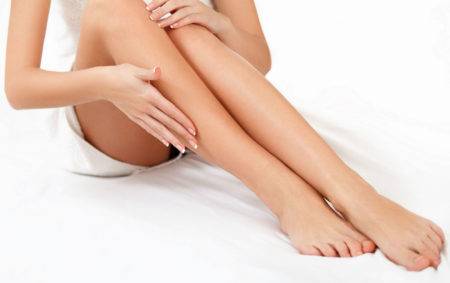
In most cases, red dots and spots on the legs or bikini area appear due to weak and delicate growing hairs that cannot penetrate the epidermis. It is strictly forbidden to try to get rid of them with a needle or tweezers. This way you can get an infection, and problems on the skin after sugaring or an electric epilator will become much greater. It will be possible to get rid of these troubles only with medical help.
A special mask has proven itself to be excellent; it is not difficult to prepare. You can get rid of unsightly consequences after depilation with its help in several sessions. To prepare such a wonderful remedy, you need to mix bodyaga and hydrogen peroxide to a paste. You can purchase these inexpensive drugs at any pharmacy.
Gently and carefully apply the resulting paste in a thick layer to your feet, rubbing with massaging movements with your fingers. It should be noted that this can only be done on the legs; it is not recommended in the bikini area
After a quarter of an hour, remove the remaining product with a napkin and rinse with plenty of water. If unpleasant painful sensations occur during the session, you should get rid of the mask immediately using water and soap. Complete the procedure on your feet by applying a rich nourishing cream.
An excellent way to forget for a long time what spots and dots are is a simple tan. You shouldn’t immediately run to the solarium, but a few days after sugaring or electrolysis you can afford such a procedure. Ultraviolet rays will easily relieve you of problems after the epilator.
Even the most expensive products must be tested on sensitive areas. If no suspicious symptoms appear after a few hours, you can safely apply the drug after sugaring or hair removal. This method is excellent because unsightly spots and dots will disappear not only on the legs, but also in the bikini area.
There are quite a few ways to get rid of unsightly manifestations on the skin after removing excess vegetation. You should not use your friend’s advice, each body is individual, and you also need to choose the right remedy personally. In some cases, after electrolysis or depilation it is worth seeing a doctor. Here are some of them:
- redness does not go away within several weeks;
- ulcers appeared in place of redness;
- discharge from points of liquid with an unpleasant odor;
- the spots become darker and occupy more and more surface area;
- allergic reaction.
By following these simple tips, every girl will be able to forget about the unsightly consequences after getting rid of hair for a long time. It is worth remembering that it is better to do everything correctly and carefully than to then carry out a lot of different not very pleasant procedures for a long time. Take care of yourself diligently and regularly, and the wonderful appearance of your figure and body will certainly always evoke admiring glances from both men and women.
Results
- Waxing will solve the problem of unwanted hair on the face and body.
- The procedure is carried out in a salon or at home.
- Using wax can lead to irritation and ingrown hairs.
- It is important to properly care for your skin before your session to reduce the risk of possible side effects.
- To relieve irritation, inflammation, itching and red spots, it is recommended to use pharmaceutical and folk remedies.
- To prolong the effect of “smooth” skin, it is recommended to follow the rules of care after hair removal. We also recommend checking out face masks from Garnier.
Those who have waxed
, they know that a very common consequence after it is
irritation on the skin
in the form of rashes, pustules or redness.
Most often, irritation appears after depilation on the face
and
bikini area
. The main causes of skin irritation are skin inflammation due to an inept procedure, overly sensitive skin, allergies to wax or wax components (additives). If epilation on the face is carried out according to the rules, then skin problems usually do not arise.
Find out how to relieve irritation after hair removal
.
After depilation, irritation: what to do, how to relieve it?
Epilation with wax is one of the effective methods of removing hair on the body and face. However, having chosen this method, you should know that irritation often occurs after the procedure, and in some cases an inflammatory process may begin.
It is important to be able to relieve irritation after depilation

Causes of irritation
The skin irritation reaction can manifest itself in a rash of red dots, large spots, pustules, or it can be manifested by skin tightness, dryness, and exfoliation of dead cells.
The epidermis may react this way due to the following factors:
- Delicate light skin.
- First waxing experience.
- Dead cells are removed from the hairs, which injures the epidermis.
- Poor quality wax.
- Allergic response to wax composition.
You should consult a doctor if the itching and burning after the session does not go away for a long time.
Experts in the field of cosmetology recommend resorting to several methods of skin treatment if irritation appears after waxing.
- Treat the irritated area with hydrogen peroxide. This reduces the risk of infection. Then the skin should be lubricated with moisturizer.
- Wipe the problem areas with a cotton pad soaked in a decoction of calendula (chamomile, celandine) - this will soothe the itching and heal the damage. After treatment with the decoction, lubricate the skin with a rich cream.
- Aloe juice and pulp are applied to the affected area for 15 minutes.
- Rubbing with aromatic and vegetable oils perfectly relieves irritation. So, 2 drops of lavender and chamomile oils are mixed with 10 ml of grape seed oil. Wipe the skin with the composition, leave it on for 40 minutes, then wash it off.
- Heated olive or sunflower oil also copes well with the problem. The oil is applied to the skin with a cotton pad.
- Panthenol perfectly relieves pain and disinfects redness.
- Baby hygiene products in the form of powders and creams relieve burning and itching.
Skin irritation should be treated immediately after the appearance of a rash, redness, etc.
We recommend!
Order.. "
Preventing irritation
Compliance with the rules of depilation and high-quality raw materials will allow you to avoid the unpleasant consequences of the procedure. After depilation for some time it is recommended:
- Do not use a scrub or rough washcloth for 24 hours.
- Take a shower only 2 hours after hair removal.
- Treatment of the intimate area requires abstaining from sexual intercourse for 24 hours.
- Do not use perfume, powders, or deodorant for 24 hours.
- Use baby soap for body care for a week.
- No sunbathing, no going to the sauna or swimming pool for two days.
- Do not comb treated areas.
- If hair grows in, then treat the skin with a scrub 2 days after the procedure, followed by moisturizing with cream, repeat every 2-3 days.
If irritation appears after each session, then it is necessary to change the depilation method.
In addition to following measures to prevent irritation, for a good safe result you need to choose the right wax
When purchasing wax, you should pay attention to the expiration date and storage conditions of the raw materials.
There are three types of wax for different purposes.
Cold - suitable for use on sensitive areas and for eliminating fine short hair. The method is quite painful and lengthy.
Warm - easy to use, hygienic, gentle on the epidermis. Suitable for any skin.
Hot - dilates blood vessels, not recommended for varicose veins. Its use is virtually painless.
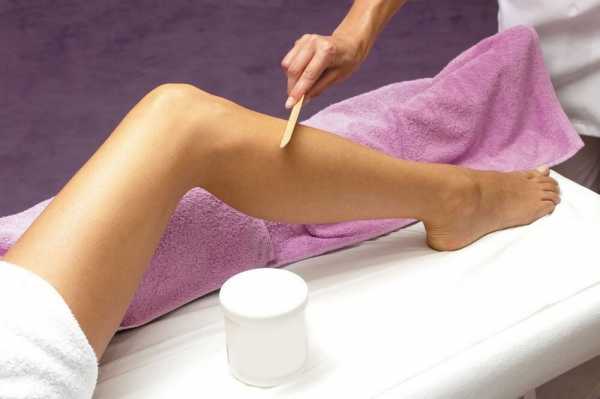
Irritation after depilation
Waxing
After choosing the right wax, you can begin preparing for depilation and directly carrying it out.
- Remove hairs with a razor 5 days before the session.
- Scrub your skin one day in advance.
- Before the procedure, thoroughly wash and steam the dermis and dry. There is no need to apply any creams at this stage.
- Using a wooden or plastic spatula, cover the skin with wax, moving from top to bottom.
- Cover the wax with a strip of cloth or napkin and press down.
- After the wax hardens, you need to sharply separate the tissue from the skin from bottom to top.
- Remove excess wax using any available means: oil, special liquid, wax removal wipes.
- If desired, you can use cold lotions.
After two days, the skin is moisturized with cream, lotion, and oil.
Allergy to depilatory wax and other contraindications
An allergy to hair removal wax may be accompanied by symptoms such as itching, burning, and redness of the skin. Less commonly, rashes, blisters, and a slight increase in body temperature occur. If such symptoms are detected, you should completely remove any remaining hair removal product, treat the skin with hydrocortisone ointment, and take an antihistamine.
Allergy after waxing in very rare cases can be accompanied by anaphylactic shock. If you feel a significant deterioration in your health, which is accompanied by difficulty breathing, swelling of the throat, irregular heart rhythm, or choking, you should take an antihistamine and call a doctor immediately.
In addition to allergies to wax, contraindications for wax depilation include:
- diabetes;
- varicose veins in the planned treatment area;
- epilepsy;
- very sensitive skin;
- heart diseases;
- pregnancy and breastfeeding;
- skin diseases;
- the presence of skin damage in the area that is planned to be epilated;
- the presence of moles, warts, and other formations in the treated area.
In these cases, you should resort to more gentle depilation methods.
Thus, skin irritation is quite often a natural side effect of waxing. To prevent such troubles, it is important to strictly follow the instructions for using the hair removal product and follow all safety rules
.
To combat irritation, you can use folk and pharmaceutical remedies. To a large extent, this depends on the degree of manifestation of the adverse reaction. If, after all the steps taken, your irritation after hair removal still does not go away, be sure to consult a doctor.
Hair on the chin, mustache above the upper lip, thick eyebrows are a problem for many women. Waxing will effectively solve this issue. The procedure can be carried out in a beauty salon or at home. Waxing has minimal side effects. Its correct implementation minimizes the risk of injury and possible negative consequences. But even professional removal can lead to irritation, inflammation and ingrown hair. You can solve the problem and reduce unpleasant consequences to zero if you properly care for your skin before and after removing unwanted hair. A large assortment allows you to select any type of product.
Causes of burns and how they can be prevented
Burns after hair removal with cream can occur for various reasons. The most common of them:
Increased skin sensitivity. It can be irritated by chemical compounds contained in any depilatory cream, including the most gentle ones. In this case, perhaps this method of hair removal is not suitable at all, and you will have to look for another. Poor quality cream. Low-quality or counterfeit products may contain extremely aggressive and harmful substances
To avoid such a danger, you should purchase products only from trusted brands and not chase too low a price, and also pay attention to the expiration date. Failure to follow the instructions for use
This is perhaps the most common cause of burns. Don't think that an extra couple of minutes won't do any harm. If it says that you need to wash off the cream after three minutes, then that’s what you should do. Overexposure is fraught with consequences. Application of cream on “forbidden” parts of the body. The skin on different parts of the body has different sensitivity. Therefore, depilatory creams contain different substances with different concentrations. And if the product is intended to remove hair only on the legs, you should not apply it to the sensitive bikini area or, especially, the face.
Methods for dealing with irritation
Now let's figure out how to get rid of red dots after shaving. After all, if you don’t do this, they can become chronic.
On the face and neck
Inflammation in these areas most often affects men. The rash not only looks unsightly, it can develop into pustules and be very itchy.
To get rid of this, you can use special soothing herbal decoctions that have an anti-inflammatory effect. For example, lotions made from oak bark, coltsfoot, yarrow, parsley, nettle leaves, string, and chamomile are recommended. The decoction can be prepared according to the instructions indicated on the package with the plants.
using grated fresh potatoes,
Cabbage mask perfectly relieves inflammation. The vegetable must be chopped and boiled in milk, then mixed with a blender until smooth. All masks are applied for about half an hour.
If you can’t devote that much time to preparing masks, just gently wipe your face with fresh aloe juice or sea buckthorn oil. You can remove red spots on your face after shaving by covering it with rings of fresh cucumber, pieces of boiled onion (you can rub it into a paste).
On foot
The skin on the legs is less delicate, so the methods described above do not always help, although they can also be used. But more often it is recommended to prepare decoctions and other wipes for this area.
For example, take several adult aloe leaves and grind them together with a dessert spoon of sunflower or olive oil. This mixture is applied to the feet. You can use the ingredients separately: wipe your feet with leaves cut lengthwise, and then spread with vegetable oil, leaving for half an hour.
Another method for removing spots on the legs after shaving is to use Hydrocortisone ointment 1%. It has a vasoconstrictor and antiseptic effect, helping to restore damaged skin.
Important! Do not overuse the ointment by applying it too often and in large quantities. The skin quickly gets used to it and stops responding to the active component. Conventional burn remedies help relieve irritation on the legs
Armpit areas
The skin in this area is relatively delicate. In addition, lymph nodes are located close to the surface in this area
Therefore, you need to be careful when treating your armpits.
You can relieve irritation here with the help of parsley decoction. To do this, brew a bunch of greens in a liter of water, and when the broth has cooled, soak a cosmetic disc in it and apply it to the damaged area for 20 minutes. In a similar way, you can prepare a decoction of hop cones.
Important! In addition to the anti-inflammatory properties, hop cones have the ability to stimulate hair growth. mint compress. The mixture should be placed on low heat and boiled for a quarter of an hour.
A cloth is soaked in the decoction and applied to the armpits.
The mixture must be placed on low heat and boiled for a quarter of an hour. A cloth is soaked in the broth and applied to the armpits.
To relieve irritation and soften skin and hair, use an infusion of plantain leaves. To do this, they are crushed and poured with milk (two tablespoons per glass of milk). After the leaves have been infused for about 40 minutes, a cloth is soaked in milk and applied to the inflamed areas.
In intimate places
Many people are concerned about red dots after shaving in the bikini area. One of the simplest remedies to eliminate them is mint oil. A couple of drops of it are added to body lotion and applied to damaged areas. However, you can use this product if you are not allergic to essential oils.
You can relieve irritation with an infusion of birch leaves. Take a couple of tablespoons of crushed leaves for a quarter glass of boiling water and leave for about 40 minutes. Used as a compress.
Did you know?
The Koran prescribes complete removal of hair in the intimate area and other parts of the body to devout Muslim women. Although in other cases interference in a woman’s appearance is not welcome.
Red spots after shaving the pubic area can also be eliminated with the help of an infusion of coltsfoot leaves. To prepare it, you need to pour three tablespoons of the herb into 0.5 liters of boiling water, leave for half an hour and strain. Then you can wipe the desired areas with it. Leftover infusion can be stored in the refrigerator for about a week.
If you don’t want to brew various herbs, you can buy ready-made special products to relieve irritation specifically in this area: creams, sprays, etc. For example, “Boro Plus”, “Malavit”, “Atovegin”. The pharmacy sells alcoholic tinctures of chamomile or calendula, as well as the excellent healing agent Bepanten.
Folk remedies
- Potato juice. This simple recipe will help you get rid of irritation after using an epilator. It has healing properties. Simply grate a potato on a fine grater and apply the resulting paste to the inflamed skin for a few minutes. Then remove the potatoes, take a shower and lubricate the area with baby cream.
- Aloe. Wash the aloe leaf, cut off the sharp edges, cut the leaf in half. Apply the fleshy part to the irritated area.
- St. John's wort oil. Perfectly fights acne that occurs after hair removal.
- Turmeric mask. Possessing anti-inflammatory and antibacterial properties, it will help relieve irritation. You need to take two tablespoons of turmeric and some warm water. Mix until mushy. The mixture is kept on irritated skin for about 20 minutes. Then wash off the mask and lubricate the skin with kefir.
- Chamomile or celandine decoction. It is recommended to make lotions of a decoction of these herbs several times a day.
- Parsley infusion. This herb has anti-inflammatory effects. After cutting it finely, pour boiling water over it and leave for a while. Rubbing the skin with a strained solution can quickly soothe the skin after hair removal.
- Vitamins A and E in ampoules. After squeezing out the contents of the ampoules, mix them with almond and peach oils and lubricate the sore skin with this mixture.
- Aspirin and glycerin. 2 aspirin tablets should be mixed with a small amount of glycerin.
- Fir cones. The gifts of the forest must be crushed, poured with boiling water, steeped thoroughly and strained. Compresses are great for removing irritation. You should keep it for about 5 minutes.
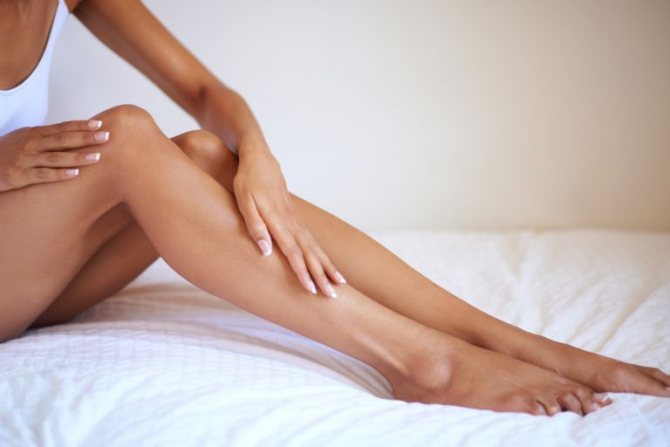
It is important to remember that the skin's reaction to any type of hair removal is individual. What irritates one person is completely safe for another. There is no fundamental difference in how to treat the skin after epilation with an epilator, sugar paste, sugaring or razor. It is important that the product suits your skin type and does not cause allergies.
For irritation after hair removal, you can use not only special medications, but also traditional recipes. The most effective of them are products that are easily prepared from available ingredients.
Oils are considered useful for irritation. They nourish the skin, allowing you to cope with troubles after hair removal. You can use tea and rosewood essential oil. 5 drops are mixed with three tablespoons of vegetable oil. The composition is used to wipe areas of skin that are irritated.
If there are no oils available, then you can use regular sunflower oil. It not only softens the skin, but also disinfects.
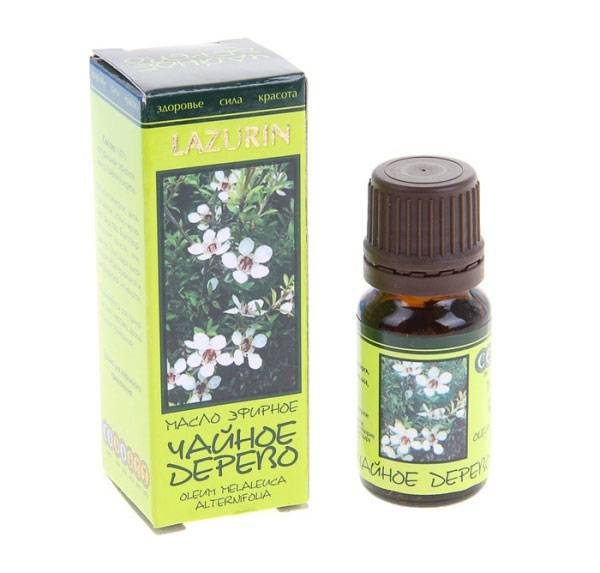
Oil helps relieve unpleasant symptoms
Decoctions based on medicinal plants also relieve skin irritation.
They soothe the skin and help it recover faster. You can make lotions with them by applying cotton wool soaked in the decoction to the affected skin. It is also allowed to apply a compress for 15 minutes.
You can use children's skin cosmetics. They eliminate irritation, restoring the condition of the skin. It is allowed to use baby powder or cream depending on the nature of the irritation.
Any remedies for irritation after hair removal are most effective immediately after the procedure. If you apply them to the skin later, there is a high probability of the inflammatory process spreading to the upper and inner layers of the epidermis. Then it will be necessary to eliminate inflammation, not irritation.
How to avoid?
Proper preparation for hair removal will reduce the extent of its manifestation. Well-cleaned and pre-prepared skin will thank you. The following useful recommendations can be highlighted:
- Before removing hair, cleanse your skin with a scrub - about 24 hours in advance. Abrasive particles will remove dead skin cells of the epidermis and “open” the path to the hair root. They will remove obstacles on the way to the hair follicle. You can use the scrub a couple of hours before the procedure or immediately before it. If the skin is very sensitive and thin, it is better to do this a few hours in advance.
- Clean the skin with a disinfectant composition - it can be hydrogen peroxide, alcohol up to 70 degrees, Miramistin or any pharmacy product.
- You can pre-steam the skin. Then it will be easier for hair follicles to pass through the open pores on its surface, and they will injure the skin less. Cosmetologists do not always praise the steaming method.
- If you're using an epilator, you can apply a lot of cold to your skin. Then the pain sensations will further decrease, since the reaction of the nerve endings on the body will dull.
- After the procedure, be sure to apply a moisturizing cream to the areas of the body “affected” by hair removal: “Bepanten”, “Panthenol”, regular children’s cream - it doesn’t matter. It’s good if the product contains soothing components - aloe vera, plant extracts.
- Before going to the beauty salon, do not visit the sauna or bathhouse for 3 days. It is not recommended to carry out steaming procedures, but you still need to take a shower.
After hair removal it is not recommended:
- wet the skin for 2-3 hours (it is advisable to abstain longer - up to 12 hours);
- sunbathe for 2-3 days;
- use a scrub (you can only do it after a day or two, not earlier);
- use alcohol tinctures and lotions.
Cosmetologists recommend leaving the area that was subjected to the procedure in its natural state and ensuring comfort and peace - for example, do not wear underwear and choose loose cotton clothes (if you had bikini hair removal), do not wear tight pants and tights (when removing hair from your legs).
The face area is especially sensitive, and irritation above the upper lip or in the eyebrow area is the most unpleasant consequence of hair removal. To get rid of redness that has already formed, cosmetologists recommend treating the area with thermal water or a mild tonic without alcohol. You can use regular peroxide or herbal decoction. They also recommend freezing herbal decoctions in cubes, which will not only help to urgently relieve irritation, but will also be useful in daily dermal care.
What not to do and what to do
If this happens, you need to know what to do in case of a burn from depilatory cream and what not to do. It is strictly prohibited in this situation:
- reuse the same cream;
- use a scrub, rub with a washcloth and perform other mechanical actions on the affected areas;
- wear tight, constricting and chafing clothing;
- sunbathing or visiting a solarium.
In general, it is worth touching the damaged skin as little as possible and providing it, if possible, with a constant flow of air - this will speed up healing.
If severe itching, burning, or pain occurs during the hair removal procedure, the product should be immediately washed off the skin with plenty of water and the area should be placed under running cold water. The same should be done if pain occurs after the procedure.
Do not throw away the packaging of the used product within 24 hours after the procedure. If an undesirable reaction occurs and you have to go to the doctor, you should show him this package so that he knows which component could cause such a reaction.
Minor burns can be treated at home, including with folk remedies. You can also alternate folk remedies with pharmaceutical ones to enhance the effect. The most effective home remedy for burns of any nature is aloe.
A plant older than three years should be used for treatment. You need to cut the leaf and cut it lengthwise. Apply the inner juicy pulp to the damaged area of the skin.
Of the plants available to everyone, plantain helps a lot - it should be applied as a whole leaf or in the form of a paste, as well as decoctions of chamomile and calendula flowers. Burns that have begun to heal and have become crusty can be lubricated with sea buckthorn oil, but it cannot be used on fresh, weeping wounds.
Medicines
Medicinal methods of treating burns from depilatory cream involve treating the wound with hydrogen peroxide and lubricating it with special ointments several times a day. Ointments Levomekol, Dermazin, Gentamicin, Streptocide are good for treating burns.
If the burn is on closed areas of the body, so that clothing does not interfere with healing, the wound should be covered with a gauze bandage or bandage.
Before and after waxing, you should follow simple care rules. This will enhance the effectiveness of the procedure, slow down the growth of new hair and prevent the risk of possible side effects. After the end of the session, for the first 2-3 days, it is recommended to treat with Chlorgesidine. Cosmetologists recommend that after waxing you avoid sunbathing, visiting a solarium, sauna, bathhouse, or swimming pool.
Is it possible to sunbathe
To prevent injury during waxing, you should not take “sunbathing” before and after the procedure for a week. Tanning can cause irritation, which can lead to pigmentation. Recovery usually takes 5-8 days. However, even after this period, you should use sunscreen SPF 30, since ultraviolet rays have an aggressive effect on sensitive areas treated with wax. This must be done within 1.5-2 months. The best cream, according to experts, is one containing zinc oxide and titanium dioxide.
Go to the sauna
Visiting a sauna after waxing, where hot temperatures are used, can negatively affect the skin. After mechanical impact, it becomes more sensitive to high temperatures. This leads to burns. You should avoid the sauna for 15-20 days.
Visit the pool
After hair removal with wax, the skin becomes sensitive, especially if the procedure was performed on the face or bikini area. Therefore, interaction with salty or chlorinated water leads to irritation. Additionally, tight swimsuits and swimming suits increase the risk of ingrown skin.
Possible consequences
Depilation with a wax mixture has its advantages and disadvantages. Negative consequences can be minimized if properly cared for.
If the procedure is performed incorrectly, there is the possibility of adverse outcomes, which include:
- getting burns, more often occurs when using;
- the appearance of bruises;
- irritation, redness;
- inflammation;
- peeling;
- ingrown hair.
What to do if irritation appears on your face and legs
The problem can occur within the first minutes after depilation, after 2-4 hours and even the next day. It all depends on the sensitivity and level of stress received. When choosing a product, you should pay attention to the composition. It is not recommended to use preparations containing alcohol components. Many consider the best option to be “Rescuer” ointment or a regular hydrogen peroxide solution. Minor irritation can be easily relieved with baby cream. All products released for after-waxing care have antibacterial and wound-healing effects. Deeply moisturize and prevent unwanted effects.
How to get rid of white pimples
To prevent acne from appearing, you need to treat with any antiseptic before depilation. For this you can use Miramistin. The product reduces the number of microbes. After the waxing procedure, you need to use moisturizing and softening sprays and creams.
However, it is better to use natural remedies - avocado or tea tree oil. They relieve irritation and help fight acne.
Red dots and spots
This problem occurs on sensitive skin. If the session is carried out in the evening, the next morning the red dots will completely disappear. If this does not happen, the problem is solved with disinfectants and sedatives. You can lubricate with lavender or tea tree oil. Make lotions from chamomile and calendula decoctions. Aloe pulp will relieve irritation and inflammation. Suitable for fighting red dots:
- talc, baby powder or cream;
- hydrogen peroxide;
- 2 tablets of aspirin diluted in 100 ml of warm water.
Why do bruises remain?
The problem arises due to the individual characteristics of the body:
- sensitive and delicate skin;
- capillary fragility;
- blood clotting disorder;
- varicose veins and diabetes mellitus;
- slow tearing of working material;
- insufficient tension when removing wax.
If a bruise appears, apply ice cubes wrapped in cloth. In the future, you need to lubricate the area with ice from a decoction of chamomile, green tea, string or calendula.
Burn after waxing
You can get it by using hot wax at home. Therefore, it is better to carry out depilation with this type of working material in a salon with an experienced specialist. If a problem does arise, you should immediately soothe the skin with a cold compress and then apply a soothing spray or lotion. Can be treated with Panthenol.
Ingrown hairs
After removal, ingrown hairs may appear. The damaged follicle “forces” the broken shaft to curl and grow in the other direction, that is, under the skin. Before and after waxing, it is recommended to carry out cleansing and exfoliating procedures.
What to anoint if your feet itch
Itching after waxing can be caused by street dust if it is a warm period. Or tight and thick tights in cold weather. Contact of the material with the skin adds dryness and flaking. The problem is also related to sensitivity. You should use Panthenol, which heals minor scratches and relieves irritation and itching. The product is applied to the area and left for 25-30 minutes. Residues are removed with antibacterial wipes.
Step-by-step preparation for hair removal to minimize the appearance of red dots
In world practice, laser hair removal has been used for about two decades. During all this time, scientists have not found any connection between hair removal sessions and the appearance of tumors.
The greatest danger to the human body is ionizing radiation, namely X-rays and gamma rays. In rare cases, such radiation comes from natural sources, but, as a rule, the source of such radiation is equipment.
Can I develop bone cancer? Laser radiation only affects hair follicles, but not body tissue. Accordingly, laser hair removal cannot cause the development of cancer.
Pharmacy drugs
There are a large number of pharmaceutical drugs that are not directly aimed at combating irritation, but due to their pharmacological properties they can cope with this problem. They may be:
- any ointments with an antiseptic effect (Boro Plus, Miramistin, Spasatel, Actovegin);
- disinfectant compounds (Chlorhexidine, hydrogen peroxide, Levomycytin);
- soothing anti-burn drugs (Panthenol, Pantestin);
- baby powder;
- baby cream
The antiseptic properties of Chlorhexidine allow the drug to be used for the prevention and treatment of irritation
The products are used in the same way: the selected drug is applied to irritated areas of the skin. The procedure should be repeated 2-3 times a day.
Chlorhexidine and hydrogen peroxide can be used for compresses. To do this, soak a cotton pad with the product and apply it to the affected area for 10–15 minutes.
Folk remedies
If you don’t have the drugs listed above at hand, and you can’t run to the pharmacy, you can use traditional methods.
Before agreeing to the procedure, check the registration certificate for the laser - a document that gives the right to use the equipment.
In accordance with the order of the Ministry of Health and Social Development of Russia dated April 18, 2012 No. 381n, a list of staff positions has been determined for persons who are authorized to provide cosmetology services. As for nursing staff, a nurse with a certificate of “nursing in cosmetology” has the right to provide relevant services, but not to conduct independent consultations, but to carry out doctor’s orders. In this case, to perform procedures using a laser, the following is required:
- the nurse must undergo technical training to operate the appropriate equipment and safety courses;
- the registration certificate must indicate that nursing staff can work with it;
- An employee of the medical center must have a certificate of “Cosmetology Nurse”.
Many people are accustomed to considering redness and irritation after waxing a completely natural phenomenon, because it occurs in most women and often goes away quickly. In fact, this is rather a side effect of this procedure. You can get rid of it after the process of removing unwanted hair; it can also be prevented by taking preventive measures.
In cases where red dots are accompanied by itching and discomfort, hydrocortisone ointment (1%) should be used. It quickly removes irritation and redness. Apply up to two times a day in a thin layer. Repeat after a few days if the redness does not go away.
You can also prepare a soothing mask from 10 g of glycerin and 2 aspirin tablets crushed into powder. You need to apply it for twenty minutes, then rinse your feet with cool water. Repeat these lotions every day until the symptoms disappear.
Home Recipes for Ingrown Hair Spots
Skin problems, especially when it comes to hyperpigmentation, which, in essence, are spots that appear due to ingrown hairs, can be solved by a dermatologist or cosmetologist. Among the offered salon treatment options:
- peeling course;
- photorejuvenation;
- laser exposure.
Peeling allows you to soften and remove the upper stratum corneum of the skin, which contains the largest amount of pigment. A course of procedures allows you to get rid of the problem of dark spots after ingrown hairs in a short time.
The use of a laser, like photoepilation, is more likely to be a preventative measure to combat ingrown hairs. After a course of procedures, hair growth stops completely, so you can also forget about ingrown hairs and spots once and for all.
You can also deal with ingrown hair spots at home. The simplest and most affordable method for removing ingrown pubic hair spots at home is the regular use of scrubs and peels to exfoliate the upper layers of skin containing dark pigment.
The scrubbing effect can be enhanced. Vitamin E is a product that restores the structure of skin cells and has a whitening effect. Girls, vitamin E should be applied after a shower to red and dark spots. It has a softening effect and accelerates skin regeneration processes. Castor oil has the same properties and also provides a brightening effect.
Aspirin based mask
Dear ladies, this product will not only get rid of stains in your bikini area, but will also help solve another equally important problem. The fact is that this mask allows ingrown hairs to overcome the stratum corneum of the skin, after which they continue to grow normally and can be removed in the usual way. Accordingly, there is no reason for the appearance of red or dark pigment spots.
The recipe for this mask is very simple. You only need 3 aspirin tablets, a teaspoon of natural honey and a little water. Melt honey in the microwave until liquid, then cool. Grind the tablets into powder. Mix all the ingredients and apply the resulting ointment to problem areas of the skin in the bikini area after a shower. The duration of treatment depends on the rate of disappearance of age spots.
Hydrogen peroxide mask
Another effective recipe to combat this problem is a mask with hydrogen peroxide. To prepare it, you will need the peroxide mentioned above and two bags of badyagi. Both components can be easily purchased at the pharmacy. Mix badyagu and peroxide in a separate container until the consistency of gruel. The mask is applied exclusively to areas of skin with pigmentation for no more than half an hour, after which it is washed off with warm water.
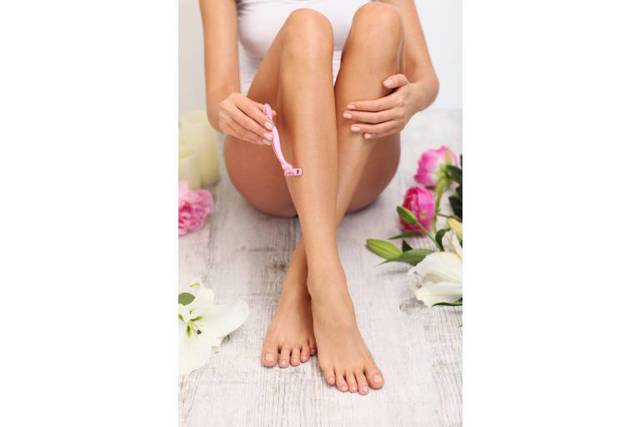
Please note that both components of the mask can act as an allergen, so if unpleasant effects occur during its use, for example, burning or tingling, the composition should be washed off immediately. Badyaga and peroxide have a drying effect on the skin, so after removing the mask, do not forget to use a moisturizer.
The frequency of using the mask is no more than twice a week. If you do not skip sessions, then after 3 weeks the pigment spots will disappear completely.
We suggest that you familiarize yourself with the postoperative period during leg vein surgery
Dear ladies, do not deny yourself the pleasure of wearing a beautiful open swimsuit or chic lingerie just because of such a trifle as ingrown hair stains in the bikini area. Start fighting them right now, don’t put off doing something that will provide you with freedom of choice of outfits, ease of movement and complete self-confidence!

